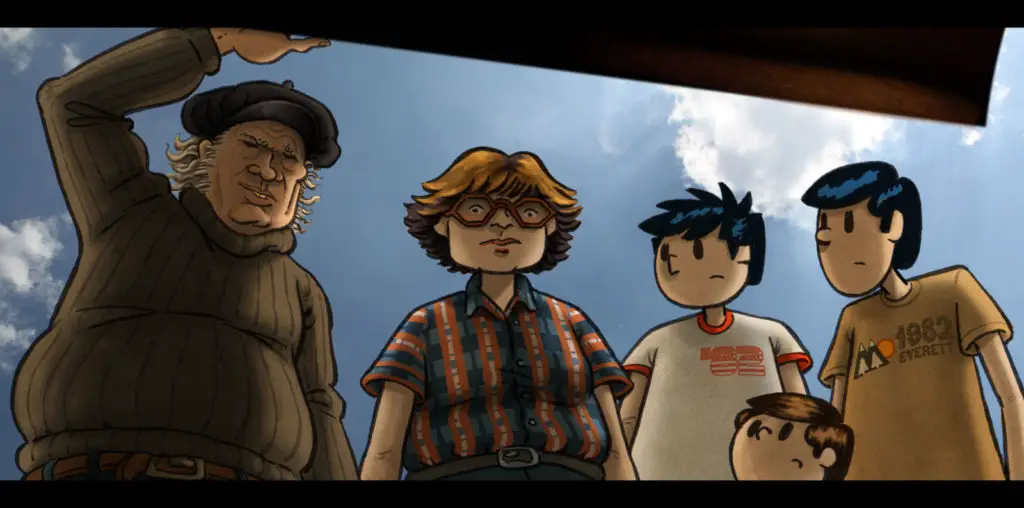
Pretty performance artist Molly McMannis (Justine Bateman) has been found dead under the flight path of LAX. Rival detectives Bob Starr (Richmond Arquette) and John Finnigan (Peter Greene) along with Inspector Dan Furbal (Lewis Arquette) are easily able to determine that Molly died after being sodomized with a poisonous carrot. Thankfully, we never see the body.
As the occasionally at odds threesome continues its investigation, director Jordan Alan’s nearly incoherent, would-be detective parody introduces us to an assortment of oddball suspects; some of whom rather quickly turn into victims themselves. Topping the list are Molly’s aspiring but spurned lesbian lover, Ivy Roberts (Teresa Hill), and her ultra-flaky friend Suzan Pretzel (Heather Graham).
Detectives Starr and Finnigan also launch investigations into shady mobster Anthony “Quinn” Quinsano (Wass M. Stevens), Molly’s over-protective, ex-con brother Liam (Bill Devlin), a ditzy, carrot-nibbling, orange miniskirt-sporting sexpot straight out of “Laugh-In” named Beta Carotene (Pamela Gidley), and others almost too numerous to keep track of.
Because there are too many people involved here, there are also too many subplots, most of which wind up having little or nothing to do with the main storyline. For instance, Alan didn’t really need to include a group therapy scene with a bunch of freaky murderers chastising someone who’s merely considering such a crime.
The whole reason to stage a scene such as this — for that matter, probably the whole reason this entire movie exists — seems to be simply that Alan could. It’s almost as if he randomly shot a collection of scenes — the ad-libbing is sometimes painfully obvious — with his almost-famous actor buddies, then tried to cut together a coherent film using these loosely related sequences.
It doesn’t work. Even liberally using flashbacks and other such temporal shenanigans to fill in pertinent information, usually a*s-saving techniques in narrative-challenged films such as this one, don’t rescue this clunker or make it any less confusing. Starr, for instance, often drones his listless monologue — “Molly’s friends didn’t deal with her murder well. Then again, who would?” — while Finnigin was on-screen. For most of the film, I thought they were the same guy.
Lastly and most damning for any parody, it’s just not funny. Not the weird costumes, not the “outrageous” characters nor their “goofy” ID subtitles. Nothing in this film made me laugh.
“Kiss and Tell” is a mess through and through, saved only by its plethora of semi-starlets running around in skimpy and/or skintight costumes. (Thank you for appearing, Rose McGowan!) For that matter, the only intriguing thing about this movie is wondering how Alan coerced so many familiar faces to appear in his otherwise lifeless film in the first place.
“Kiss and Tell,” indeed. Digging up that dirt would be far more entertaining than the film it spawned.
